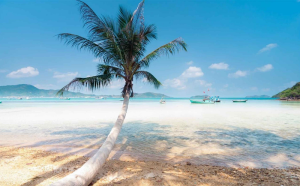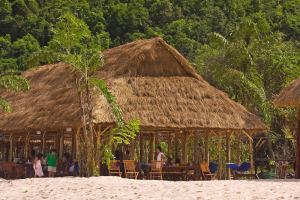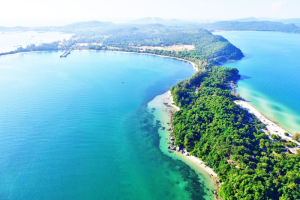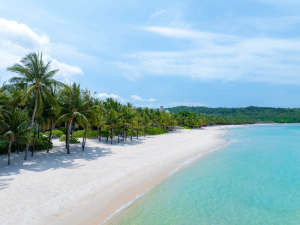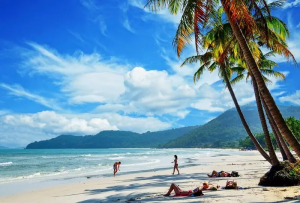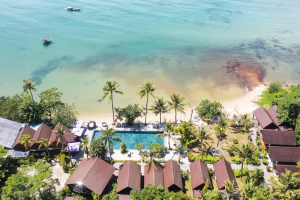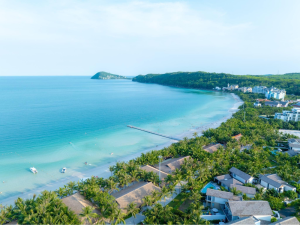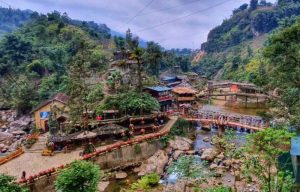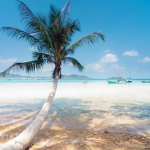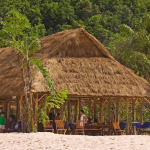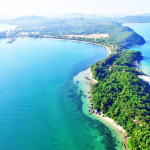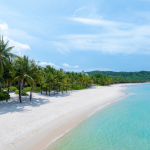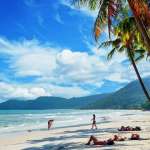Mekong Delta weather plays a vital role in shaping the travel experience across this fascinating region in southern Vietnam. With tropical conditions year-round, travelers can expect warm temperatures and varying rainfall depending on the time of year. In this article, we’ll provide an overview of seasonal patterns, ideal times to visit, and how the weather influences both daily life and tourism. Knowing what to expect will help you make the most of your trip to the Mekong Delta.
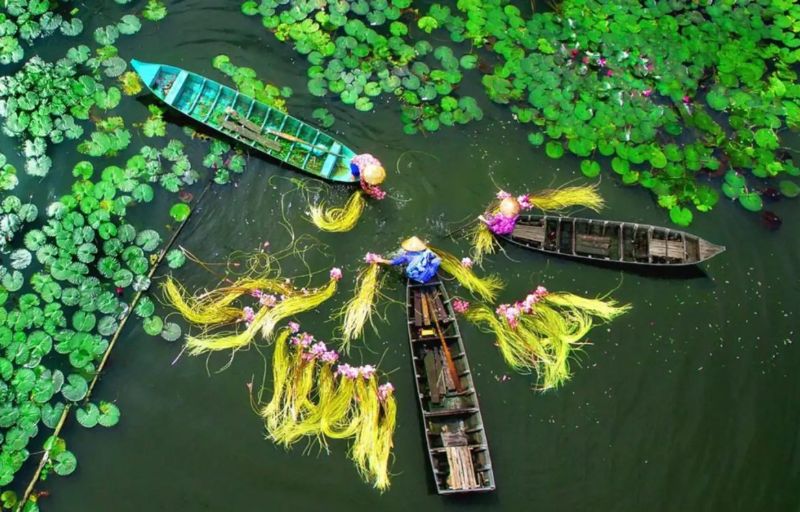
What is the weather like in the Mekong Delta?
The Mekong Delta weather is characterized by a monsoon tropical uniform climate, with hot temperatures all year and high humidity. Average day temperatures typically range from 23 °C to 34 °C with minimal variation between day and night. Humidity is high, usually 80–90%, and can heighten the sensation of heat for those unfamiliar with the tropics. While warmth is constant, rain does follow a predictable seasonality: a wet season from May to November, with afternoon deluges and occasional storms, and a dry season from November to April, with sunshine and much less rainfall. In tourist realities, dry-season months give ideal weather for boat cruises, biking, and visits to floating markets. Wet-season rain, however, usually arrives in repetitive 30–60 minute bursts, which rarely impact morning outings but can ruin afternoons. Though as grueling as the downpours may be, the wet season brings colour to the landscape in green fields and fills waterways for deeper river cruising.
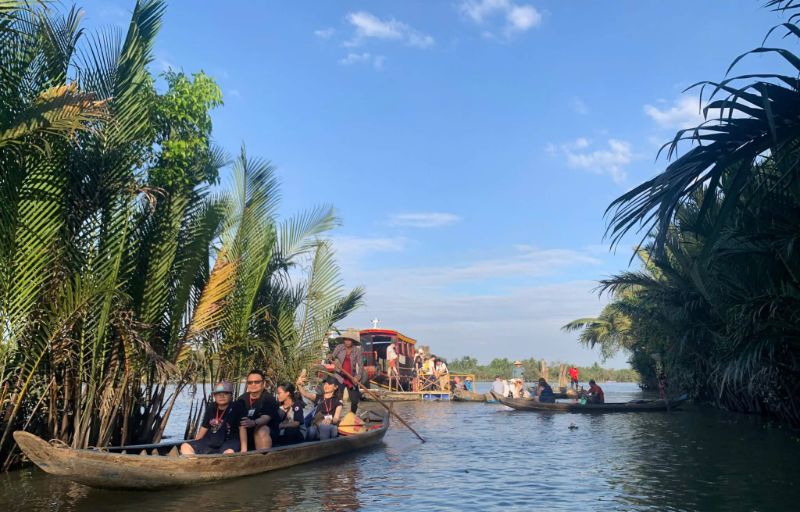
Understanding the seasons in the Mekong Delta
The weather Mekong Delta is quite complex, below are some of the key takeaways for your next trip.
Dry Season (November to April)
During the dry season, only 5–10% of the overall rainfall is observed, which results in largely clear skies and favorable travel conditions. Day temperatures are usually at 30–33 °C, with nights falling to 21–24 °C, particularly in December and January. This period is characterized by low precipitation, tranquil water bodies, and longer sunshine duration – around 6–8 hours daily, particularly between February and April.
These conditions are perfect for enjoying outdoor activities such as boat safaris, cycling routes, and day trips to rural villages. Early season dry months (December–February) coincide with festivals and flowering, and thus, a culturally rich time to visit.
Wet Season (May to November)
It is started by the May southwest monsoon and reaches its peak during a period of heavy rain in August and September. The temperatures are all around warm on average at 31–34 °C, with humidity normally more than 80–85%. Rain usually arrives in the form of quick but heavy afternoon showers that last anything from 5–30 minutes, though storms endure entire days at times. While such showers disrupt travel now and then, they rejuvenate the delta, flooding rice paddies and floating markets and sustaining agriculture.
Rain-swollen rivers cause canal systems to become deeper, and the whole “floating season” is at its peak between August and October, offering unique opportunities to cruise the canals. Even with more severe rains during mid-year months, mornings tend to be pleasant, allowing travelers to arrange early-day outings with minimal risk.
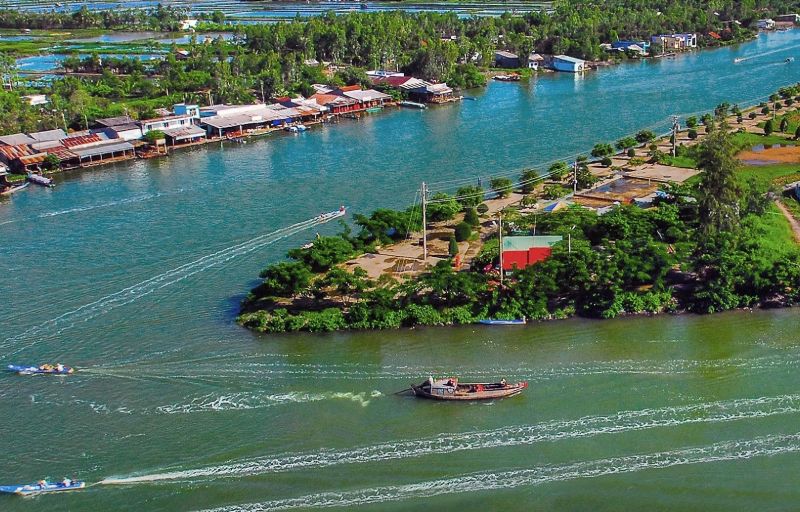
Best time to visit the Mekong Delta based on weather
Choosing when to visit the Mekong Delta depends on your travel style and priorities:
Dry season (November to April)
This is usually the most convenient time to visit. Daily temperatures of approximately 23–32 °C are typical, with clear and serene conditions and minimal precipitation (only 5–10% of yearly amounts). Cooler temps arrive in December and January, slightly (20–28 °C), perfect for pleasant exploration and outdoor discovery. There are consistently sunny conditions, room to oneself on tours, and peak activity on floating markets. But with this high season comes more people and prices, and higher accommodation and activity prices.
Shoulder seasons & special periods
- January-March remains pleasant, and festivals like Tet and Ba Chua Xu add rich cultural content.
- June-August is the best fruit time, which is ideal for gourmets to sample tropical fruits like durian and mango straight from the orchards.
- September–November, the “floating season” has waterways brimming with floodwaters, ideal for immersion boat travel and experience in floating villages. The prices are lower, and tourist seasons are less crowded at this time.
Wet season (May through October)
The monsoon season is full of greenery and nature-based activities, with frequent but short 1–2-hour afternoon rain showers. Rivers overflow for deeper river cruising, and rice paddies are colorful, flowered landscapes. Tourist numbers are smaller and rates are less expensive, although some remote activities are affected by weather or flooding.
Summary table:
| Season | Advantages | Considerations |
| Dry (Nov–Apr) | Comfortable weather, sunny days, full tourism services | Crowds, higher prices |
| Harvest (Jun–Aug) | Fresh tropical fruits & quieter villages | Hotter, more humid |
| Floating (Sep–Nov) | High water levels, cultural authenticity, and lower cost | Rainy afternoons, possible flooding |
| Wet (May–Oct) | Lush landscapes, immersive nature, fewer travelers | Frequent rain, travel flexibility needed |
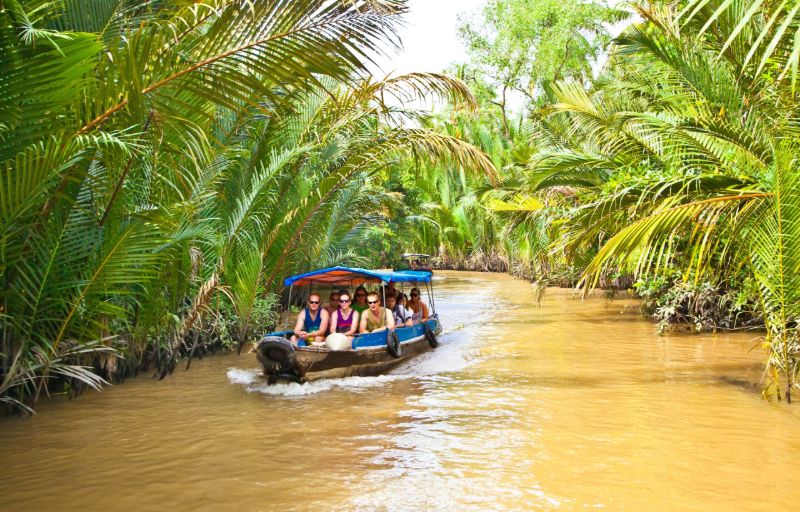
Read more: Secrets of the Mekong Delta you need to know
How the weather affects travel and activities in the Mekong Delta
The Mekong Delta area is heavily affected by the weather changes, so are the traveling activities here:
River cruises and floating market tours
Mekong Delta’s renowned boat tours and floating markets are heavily influenced by the season. During the dry season (November to April), the weather is quite predictable with sunny skies, tranquil river waters, and minimal rain. This is the perfect time to cruise along the river, explore bustling floating markets like Cai Rang or Phong Dien, and make your way through the smaller canals without hindrance.
On the other hand, the rainy season (May to October) provides higher water levels that facilitate higher access to offshore water bodies. Afternoon rain showers are common but usually brief, allowing tours to go on with some flexibility in time schedules. Most boat tour operators adjust by using covered boats and varying departure times. While occasional delays do occur, the rains also bring an enriched environment, with greener scenery and deeper rivers providing higher potentialities for exploration.
Cycling and exploring villages
Dry months are best for cycling, with rural roads in the delta being hard, low dust on the roads, and tolerable but warm weather. Tourists can enjoy long bike tours of rice fields, towns, and along the canals without fear of sudden changes in the weather.
The same activities must be performed with more caution during the wet season. The roads can be slippery and muddy after rain, and the smaller roads can flood. Morning is still the safest time for excursions, whereas afternoons must be reserved for home or covered activity. Waterproofs must be worn, and lightweight rain gear carried at this time.
Nature and wildlife observation
Weather also has its significant role in the natural existence of the Mekong Delta. Throughout May to October, the rains help flood wetland areas, creating a nurturing habitat for animals such as birds, fish, and aquatic plants. Birdwatchers normally visit sanctuaries like Tram Chim or Tra Su Forest during these months to spot uncommon birds in a lush, thriving environment.
The dry season, even though less verdant, offers clearer visibility and easier access to reserves. Animals group themselves around accessible water bodies, and therefore, spotting becomes more predictable. Photographers like this time due to well-defined lighting conditions and uninterrupted treks on nature trails.
Local culture and festivals
Seasonal existence closely complements cultural existence in the Mekong Delta. Significant celebrations such as Tet (the Vietnamese Lunar New Year) in late January or early February and the Ba Chua Xu Festival during late spring and fall, during the dry season, offer rich local experiences with minimal weather-related disruptions.
But the rainy season also possesses cultural diversity. The Ok Om Bok Festival, typically in October or November, is a highlight of Khmer communities and features boat racing, floating lights, and ceremonies to celebrate water and harvest. These seasonal events are deeply tied to the rhythms of delta life and offer unique perspectives for culturally curious travelers.
Travel logistics and accessibility
Weather conditions have a direct impact on the mobility of tourists within the region. During the dry season, travel is trouble-free – roads are passable, ferries are readily available, and traffic congestion is minimal. Tours and transfers operate on schedules, making it convenient to plan an itinerary.
During the rainy season, especially high months of August and September, rural roads could be plagued by flooding and cancellation or delay of boat trips. Travelers need flexible timetables and keep abreast of local weather conditions. Pre-bookings with experienced local tour operators who understand seasonal variations can help minimize disruptions.
Health and comfort considerations
Humidity is always high, but particularly strong in the rainy season. Guests can get tired more easily and must remain well-hydrated, wear light clothing, and seek sun protection. Rain also disturbs mosquitoes, and the demand for repellent and evening-long-sleeved shirts increases.
The dry season is easier on most tourists, particularly those unaccustomed to tropical weather. Even so, it’s a good idea to take water along, limit sun exposure during the hottest part of the day, and stay in well-ventilated hotels.
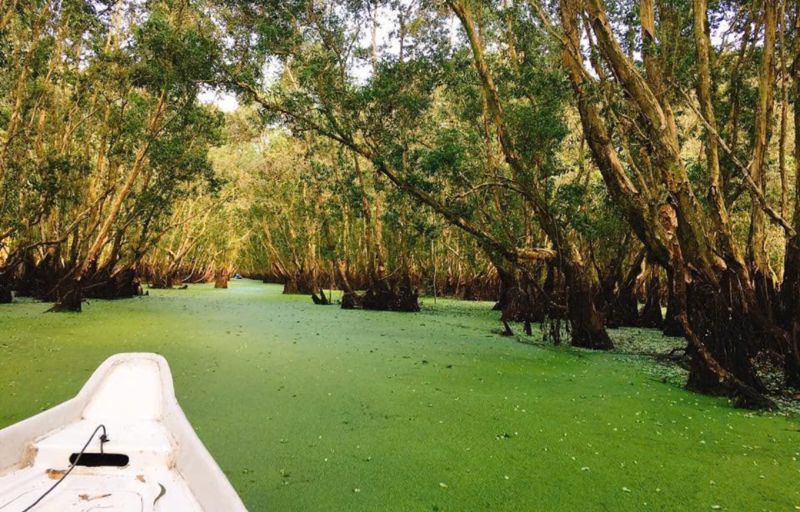
What to pack for Mekong Delta weather
Packing smart for the weather Mekong Delta means preparing for heat, humidity, and occasional rain – this list will help you stay comfortable and ready for any situation.
1. Clothing essentials
The best option when traveling to the Mekong Delta tropical and hot climate, is to wear light, airy clothes like cotton or linen. These types of fabrics are ideal for shirts, shorts, skirts, and trousers, as they keep you cool in tropical heat. Fast-drying activewear is particularly practical during rainy months, as clothes dry quickly following instantaneous rain showers. A light wrap or layer, e.g., a thin jacket or shawl, will be useful for cooler mornings or evenings and also provides mosquito protection. Modest clothing is a must for visiting temples – bring tops and bottoms that cover your knees and shoulders. Slip-on shoes are also best for convenience when entering religious places.
2. Rain protection
Weather in the Mekong Delta can be unpredictable during the wet season, so proper rain protection is essential. A compact rain jacket or poncho is highly recommended from May through October, when afternoon showers are frequent. A small, portable umbrella can serve dual purposes—shielding against both rain and strong sunlight. To protect your belongings, consider using a waterproof backpack cover or a dry bag to keep documents, electronics, and snacks safe and dry during boat rides or sudden showers.
3. Footwear
Footwear in the Mekong Delta should be practical and comfortable to handle the varied terrain and moisture. Bring flat-soled walking shoes or sneakers with good grip and ventilation for walking around towns and exploring trails. Rubber-soled sandals or water-friendly shoes are useful for boat trips or visits to riverbanks, as they dry quickly and handle wet conditions well. Additionally, slip-on sandals or flip-flops are convenient for temple visits and ideal for relaxing after a long day of touring.
4. Sun and insect protection
Protecting yourself from the sun and insects is crucial in this tropical region. A wide-brimmed hat or cap, UV-protection sunglasses, and a high-SPF sunscreen are essential to guard against sunburn and heat exposure. Insect repellent should be used year-round, especially during the rainy season when mosquito activity increases. Wearing light, long-sleeved tops or a shawl can add another layer of protection, particularly during early morning or evening boat rides.
5. Accessories & gear
Having the right accessories can greatly enhance your comfort and preparedness. A sturdy daypack with a rain cover is useful for carrying daily essentials such as a camera, water bottle, sunscreen, and snacks. A reusable water bottle helps you stay hydrated in hot and humid conditions. For the rainy season, bring a dry bag or waterproof pouch to protect electronics and other valuables. A compact toiletries kit should include travel-size sunscreen, insect repellent, basic medications, hand sanitizer, tissues, and any personal hygiene products you may need.
6. Health & miscellaneous
Basic health and safety items should not be overlooked. A small first-aid kit with pain relievers, motion-sickness medicine, antihistamines, and bandages is highly recommended, especially if you plan to visit remote areas. Quick energy snacks like granola bars, nuts, or dried fruit can come in handy during long tours or boat rides. Lastly, always carry your travel documents and enough local currency in small denominations, as ATMs may not be available in more rural parts of the Mekong Delta.
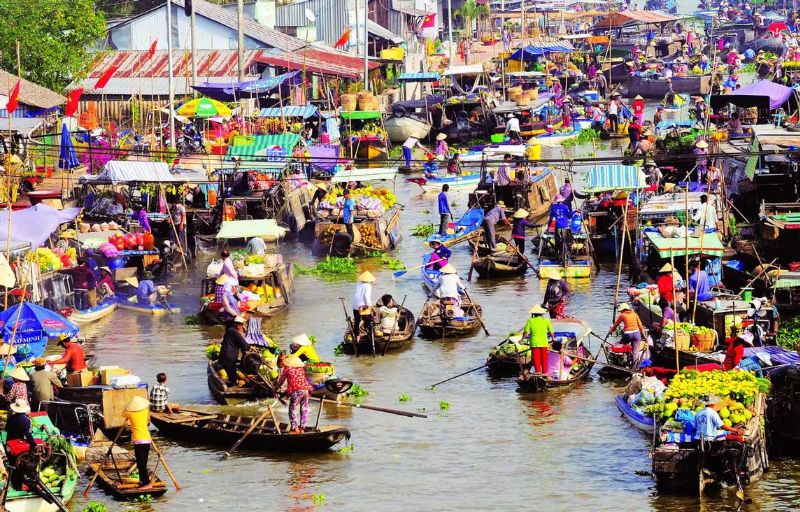
Don’t wait – start your dream tour with Lily’s Travel! Since 2007, we’ve earned over 2,000 five‑star Tripadvisor reviews and a reputation as one of Hanoi’s top agencies. For 15 years, Lily’s Travel has connected international guests with Vietnam’s vibrant culture, lush landscapes, and friendly communities. Our signature Vietnam–Laos–Cambodia routes reveal hidden corners of nature and rich multi‑ethnic traditions, backed by passionate young guides and cutting‑edge 4.0 tour previews. We prioritize sustainable, community‑focused experiences, so every trip leaves a positive impact. Choose Lily’s Travel for expertly crafted, unforgettable journeys.
Mekong Delta weather plays a crucial role in shaping your travel experience, from the timing of your visit to the activities you enjoy. By understanding the region’s tropical climate, seasonal shifts, and packing needs, you can better plan a trip that aligns with your preferences. Whether you favor sunny days or lush, rain-fed landscapes, the Mekong Delta offers year-round beauty for every traveler.
Read more: Top 10+ must-try Mekong Delta food delights



